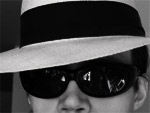My First Exam
Transport was a blast. Imagine the largest hospital you've ever seen and you'll get an idea. The place is a maze of corridors. I felt like I was exploring. I don't want to give you the idea that it's cold, far from it; the staff are all caring individuals. But it is a county hospital so it's naturally comprehensive it scope. Radiology alone seems to occupy a city block of area.
We were assigned to shadow a transport staff. I'll call him Tim. Tim made it fun with invites to us to figure out how to get around the hospital. We went up to the Burn Intensive Care Unit (BICU.) We watched several trauma exams. I wish I had the time to fill you in on everything we saw. Suffice to say I feel at home here. It really is my element.
Today was my first exam. I didn't comp. it. But I was basically directed through the whole exam. It was done with a special machine intended for chest images. It's the only direct radiography (DR) machine in whole hospital. The bucky is the image receptor (IR.) The tube moves up and down with the bucky automatically. The definition of such a system is that no cassettes are used. The gonad shield is a lead curtain that closes like a door. The tech dragged me over and stepped me through the entire process. It was a special thrill.
It's late in my day. So I just want to ask for some feedback. I know it's easier just to read this. But, how about telling me what you think. This can't be a one way street. How about a little synergy? Thanks for reading Radiologic Confidential.

